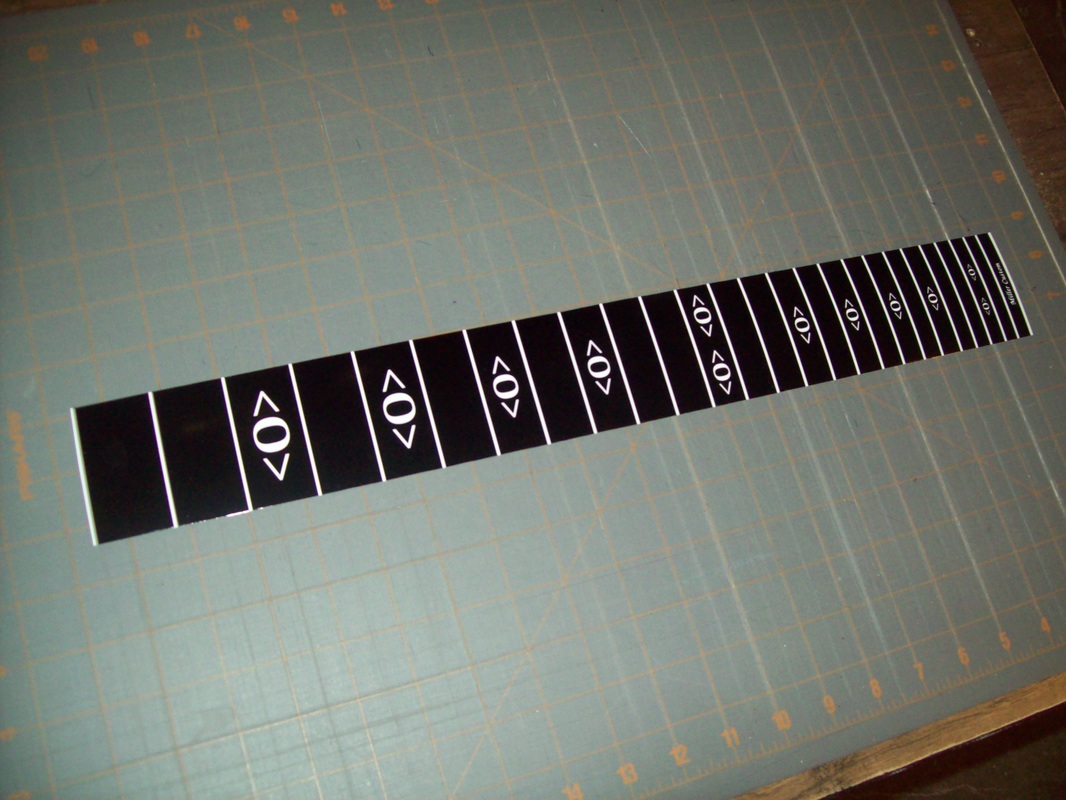Marking the fret positions

Lap Steel Guitar Template

- The fretboard is a smidge over 57mm wide, so the bit of brass for the nut was cut a little bit longer than this - better to fettle this down to size than try to rework the fretboard because the final sizing will be done when the fretboard is glued on.
- Apply the rear portion being careful to align the fret overlap and follow the previous instructions for this piece. You can apply 'Decal Fix' or similar to the edges to seal in the decal if required. Allow 48 hours to dry thoroughly before applying any laquer, although the decals are pre finished and do not require further finishing.
- I did a search of this forum and elsewhere and can't seem to find a pdf of the basic Fender lap steel (like a Champ). I'd like to build one or base a build on one, simple 6-string version with a Tele bridge pup, half bridge and control plate, etc. Something that had a template for a 22.25' scale fretboard would be helpful as well.
- A fret board, and the lap steel is a great way to experience the joys of learning to install frets. Since there is no requirement here to get it perfect, the pressure’s off. A small Japanese pull.
Printable Steel Guitar Fretboards, Walkerton, Indiana. 638 likes 1 talking about this. On this page I offer a resource for downloading printable fret boards for lap steel and pedal steel guitars.
Lap Steel Fretboard Template
Using three small pieces of double-faced tape, fasten a ruleparallel to one edge of the fretboard so that the zero-mark of therule is about 1/8' (3mm) from one end. Cut the zero-mark intothe fretboard surface with a razor knife and a square. Continue tomark all 24 fret positions on the fretboard surface. It isobviously impossible to work to an accuracy of one hundredth of amillimeter or one thousandth of an inch, so the figures will haveto be rounded up (5-9) or down (1-4) to tenths of a millimeter orhundredths of an inch. Try to be as accurate as possible whenlaying out the fret distances. When you have marked the zero-fretand all other frets (plus an additional one for the fingerboardend), double-check the distances by reading each position off therule and then comparing these values with the figures in the table.If the two differ by more than 0.3mm or 0.012', the mark hasto be recut. If you use a ruler with 1/64'-marks, you may findthe six 'nearest fractions' columns in the table on theopposite page helpful. Simply add up the values of a line: the 14thfret, for example, is located at 12' plus 15/32' plus1/128' (1/128' being halfway between two1/64'-marks). The 'Result' and 'Error'columns show the small and insignificant deviations from thecalculated values.
AdobeReader required